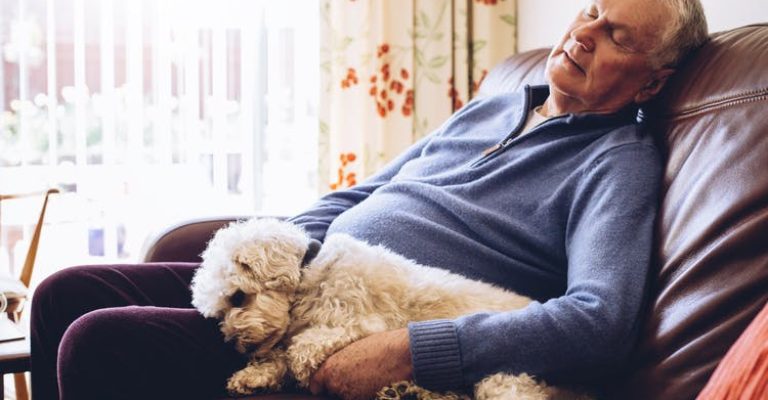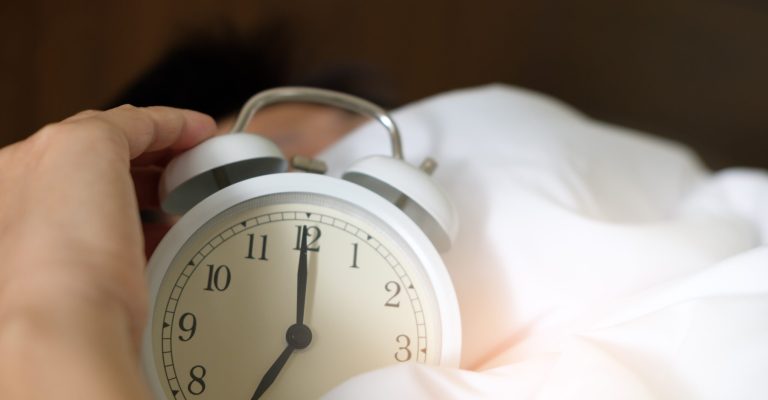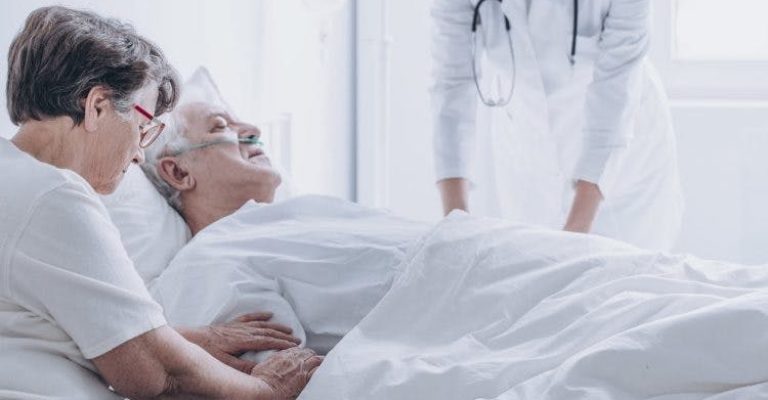
Excessive daytime sleepiness (EDS), also known as hypersomnia, is a syndrome that causes fatigue and excessive napping following a stroke. Even after a full night’s sleep, people with EDS often feel compelled to sleep throughout the day. While sleep is essential for fostering a good recovery, sleeping excessively after a stroke might indicate more significant underlying issues.
This article will go over the neurological advantages of sleep and the reasons and symptoms of excessive sleep after a stroke.
Many stroke patients report weariness and sleepiness during the early stages of stroke recovery. While the brain generally consumes 20% of total body energy, that number rises in the weeks and months after a stroke. This is because the brain takes additional energy to fix the damage, leaving less energy available for normal processes like remaining attentive.
Getting enough sleep is critical for general health and well-being, particularly for stroke survivors. Adequate and restful sleep may help the body heal and renew and ease stroke symptoms such as excessive drowsiness. Some of the advantages of getting enough sleep after a stroke are as follows:
Improved cognitive function: Adequate sleep is necessary for the brain to operate correctly and may enhance cognitive function, memory, and learning.
Reduced risk of depression: Sleep difficulties are strongly connected to depression and anxiety, and getting enough sleep may help you avoid acquiring these mental health illnesses.
Reduced risk of stroke recurrence: Sleep deprivation has been associated with an increased risk of stroke recurrence. A good night’s sleep may assist in lessening this risk.
Improved cardiovascular health: Sleep is essential for maintaining cardiovascular health, and getting enough sleep may help reduce the risk of hypertension, diabetes, and obesity.

Although sleep is an important element of stroke healing, many survivors experience fatigue and may develop a condition known as excessive daytime drowsiness (EDS). While the reported prevalence of EDS varies greatly, it is estimated that between 18% and 72% of all stroke survivors have it.
After a few weeks, excessive daytime drowsiness normally subsides. However, EDS might remain for more than six months in roughly 30% of stroke survivors. Excessive drowsiness may harm stroke therapy, recovery, and one’s mood, relationships, and everyday activities.
Excessive daytime drowsiness may be a main disease or a secondary symptom of various disorders. While EDS may be caused by a stroke, a brain injury, or cancer, it can also be caused by drugs, lifestyle, or other sleep problems.
Excessive sleeping after a stroke is caused by several circumstances, including:
Fatigue
Fatigue is one of the most prevalent reasons for excessive sleeping after a stroke. During a stroke, the body is subjected to a great deal of stress and trauma, which may deplete the body’s energy reserves. As a consequence, many stroke survivors report tiredness and drowsiness.
Medications
Medication is another typical cause of increased sleeping after a stroke. Many stroke survivors are given drugs to assist them in managing their symptoms, and some of these medications may be sedatives. This may make staying awake challenging, and the individual may nap for extended periods.
Breathing problems during sleep
Stroke survivors may develop sleep-related respiratory issues such as sleep apnea, which may cause excessive daytime drowsiness. Sleep apnea is a disorder in which a person’s breathing is continuously interrupted during sleep, resulting in poor sleep quality and increased daytime drowsiness. This may be caused by brainstem injury, which can occur during a stroke.
Depression
Depression is a prevalent issue among stroke patients and may lead to excessive sleep. Depression may create emotions of despair and a lack of drive, making it difficult to remain awake.
Reversed Robin Hood Syndrome
The Reversed Robin Hood Syndrome is a condition in which the brain favours sleep above other processes, resulting in excessive sleeping. This might be due to the brain’s effort to compensate for the stroke’s damage.
The knee and ankle are moved through their complete range of motion in these paraplegic exercises. To do these exercises, a person might lay on their back and slowly pull their knee towards their chest before extending it back out. Alternatively, they might lay on their stomach and gently press their heel towards their buttocks before extending their leg back out. These exercises are essential for keeping your muscles flexible and avoiding muscular contractures.
Slip the front part of your foot inside the loop of the leg lifter for your first leg paralysis exercise. Then, lay on your side with your leg lifter foot on top of your other leg.
Pull the leg lifter strap gently to elevate your leg to the side. When you feel your body’s natural resistance, stop tugging and maintain the posture to stretch your inner thigh.
Lift and lower your leg 15 times more, then switch sides and repeat with the other leg.
Lay flat on your back with the leg lifter on one foot. Pull the strap towards your upper body with one hand while bending the knee with the other.
Use your arms to assist in maintaining your knee in place after it reaches your body.
Hold the posture for a few seconds, then gently straighten the knee as you lower the leg.
Individuals with paraplegia may use this exercise to prevent ankle stiffness.
Sit with one leg bent to the side to make it easier to reach your foot. Stabilize your ankle with one hand while moving your foot in circles with the other.
Always rotate clockwise and counterclockwise. One method promotes circulation, while the other relieves stress.

These workouts require you to contract your muscles without moving your joints. For example, a person may attempt to push their heel into the floor while maintaining the same posture of their knee and hip. They might also attempt to squeeze a ball or an exercise band with their feet to strengthen the muscles in their legs. These exercises may assist in maintaining muscular strength and work on certain walking muscles.
The quadriceps muscles, the big muscles at the front of the thigh, are contracted by pushing the back of the knee into the bed or floor while maintaining the hip and knee in the same posture. Squeezing a therapy ball or utilizing ankle weights may help with this.
The hamstring muscles are placed in the back of the leg and are contracted by squeezing a ball or workout band with your foot. This will aid in the maintenance of muscular strength and tone.
Excessive drowsiness after a stroke may present several ways, making it difficult to differentiate from normal exhaustion. Some of the most prevalent symptoms of post-stroke drowsiness include:
Daytime drowsiness: Feeling overly drowsy throughout the day, despite having slept well the night before.
Difficulty remaining awake: Difficulty keeping awake during activities such as reading or watching television.
Excessive napping: Taking many naps throughout the day or falling asleep at inconvenient moments.
Slow response time: Responding to stimuli or finishing activities takes longer than normal.
Difficulty concentrating: Difficulty concentrating or performing activities that demand concentration.
It is crucial to remember that extreme drowsiness may be a sign of other underlying medical disorders, so if you are feeling excessive sleepiness after a stroke, you should visit your healthcare professional to rule out any other possible reasons. They may also recommend a sleep study to aid in the identification of any sleep-related respiratory difficulties or other sleep abnormalities.
Excessive daytime drowsiness after a stroke may be a bothersome and distressing condition that negatively impacts a person’s quality of life. However, with the correct therapeutic strategy, excessive drowsiness may be managed and reduced. Following a stroke, several treatments for excessive daytime drowsiness include:
Medications
Stimulants, for example, may be used to assist in boosting alertness and minimizing tiredness throughout the day. Modafinil or methylphenidate, for example, may be prescribed by your doctor.
Sleep hygiene
Techniques such as keeping a regular sleep schedule, avoiding coffee and alcohol close to bedtime, and maintaining a pleasant sleep environment may enhance sleep quality and minimize daytime drowsiness.
Exercise
Exercise has been demonstrated to enhance sleep quality and decrease daytime tiredness. Every day, aim for at least 30 minutes of moderate-intensity exercise.
Cognitive-behavioral therapy
This treatment modifies negative sleep thinking patterns and behaviors that may help reduce excessive drowsiness after a stroke.
CPAP
Continuous positive airway pressure treatment (CPAP) may be used to give a consistent flow of air to the airway and assist in maintaining it open during sleep if the underlying cause of excessive drowsiness is a sleep-related breathing condition such as sleep apnea.
Addressing underlying reasons
To properly treat the symptom, it is critical to address any underlying causes of excessive drowsiness, such as depression, brain damage, or drugs.
Excessive sleeping after a stroke is usual in the early stages of recovery as the brain attempts to mend itself. Excessive daytime drowsiness, on the other hand, may indicate additional issues that should be explored with a doctor.
If daytime drowsiness is caused by depression, sleep apnea, or other issues, addressing these disorders may help reduce tiredness. Other drugs, such as modafinil, may boost alertness. Doctors may assist in developing a personalized treatment plan for an individual’s particular requirements.